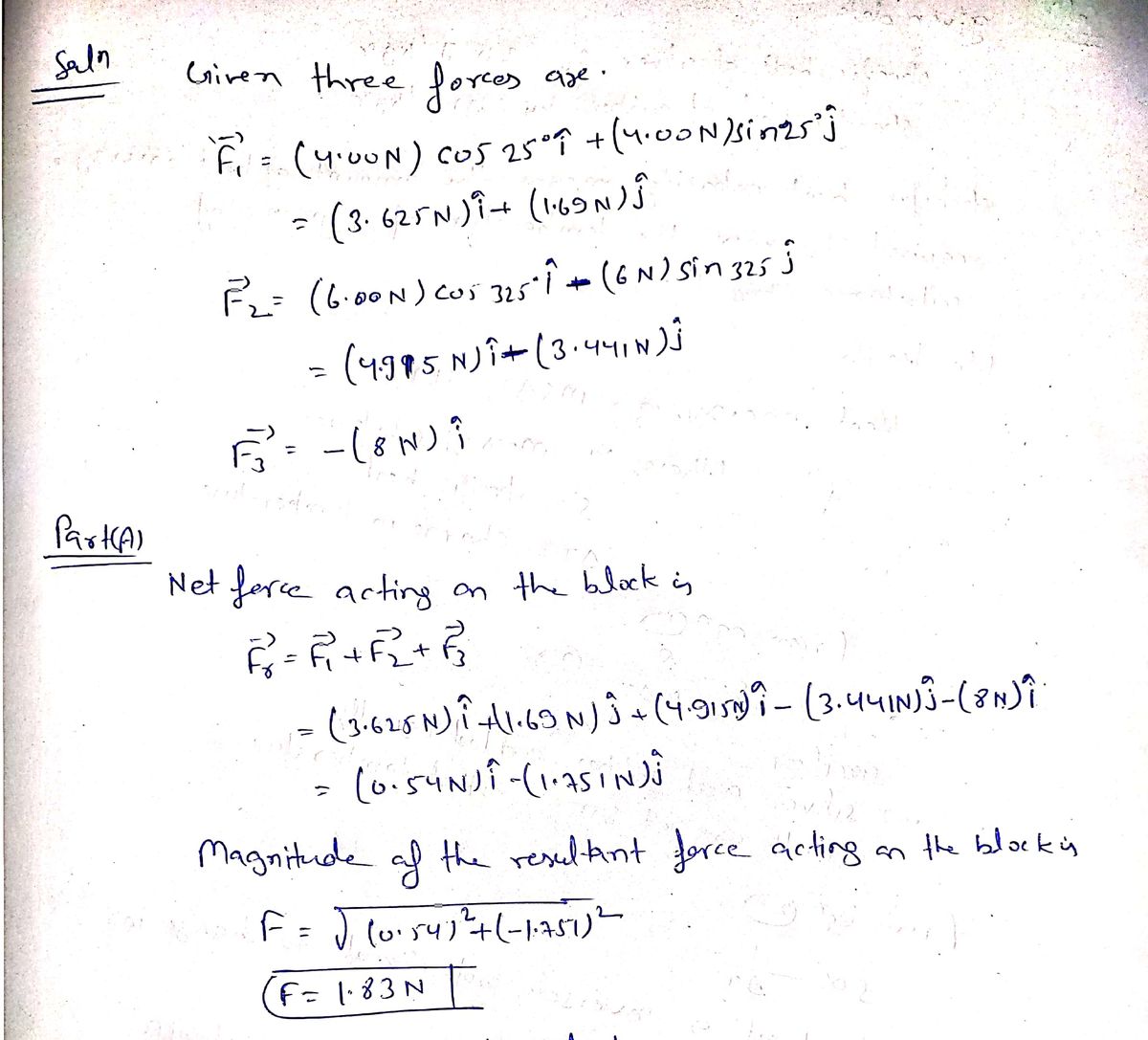The diagram below shows a block of mass m=2.00kg on a frictionless horizontal surface, as seen from above. Three forces of magnitudes F1=4.00N, F2=6.00N, and F3=8.00N are applied to the block, initially at rest on the surface, at angles shown on the diagram. (Figure 1) In this problem, you will determine the resultant (total) force vector from the combination of the three individual force vectors. All angles should be measured counterclockwise from the positive x axis (i.e., all angles are positive). Part A) Calculate the magnitude of the total resultant force Fr= F1+F2+F3 acting on the mass. Part B) What angle does Fr make with the positive x axis? Part C) What is the magnitude and direction of the mass's acceleration vector, a ? Part D) How far (in
The diagram below shows a block of mass m=2.00kg on a frictionless horizontal surface, as seen from above. Three forces of magnitudes F1=4.00N, F2=6.00N, and F3=8.00N are applied to the block, initially at rest on the surface, at angles shown on the diagram. (Figure 1) In this problem, you will determine the resultant (total) force vector from the combination of the three individual force vectors. All angles should be measured counterclockwise from the positive x axis (i.e., all angles are positive). Part A) Calculate the magnitude of the total resultant force Fr= F1+F2+F3 acting on the mass. Part B) What angle does Fr make with the positive x axis? Part C) What is the magnitude and direction of the mass's acceleration vector, a ? Part D) How far (in meters) will the mass move in 5.0 s? Part E) What is the magnitude of the velocity vector of the block at t=5.0s? Part F) In what direction is the mass moving at time t=5.0s?


Trending now
This is a popular solution!
Step by step
Solved in 2 steps with 2 images









